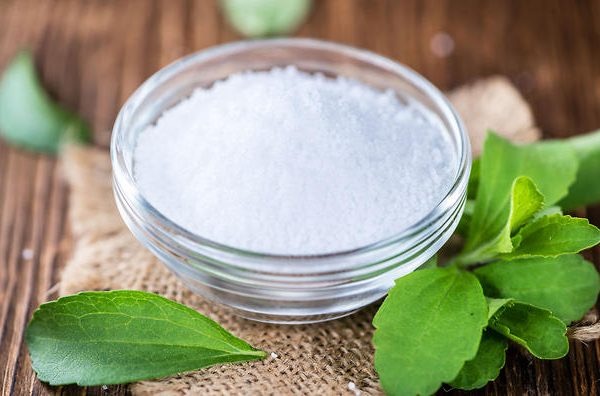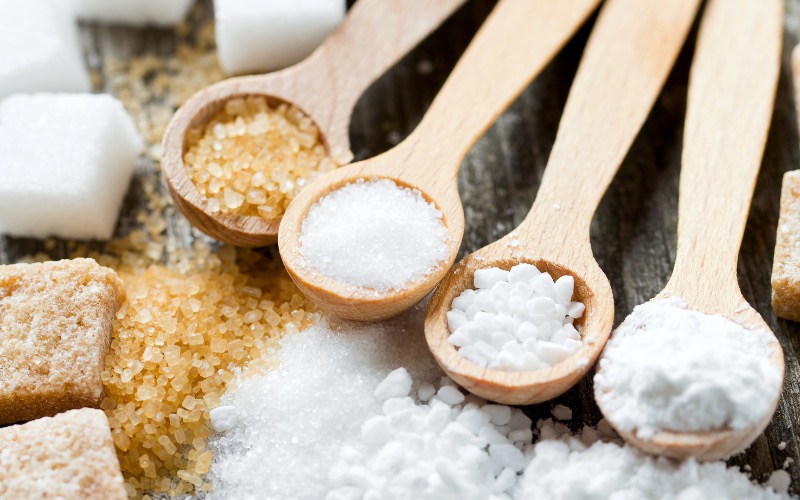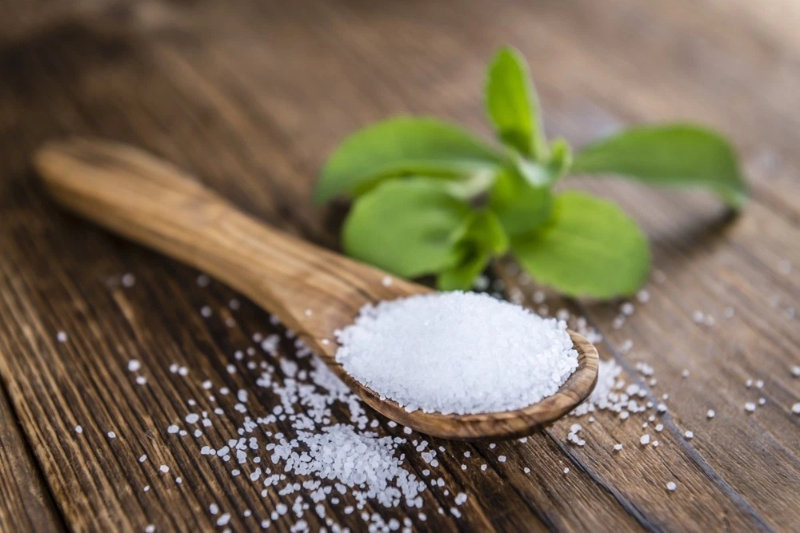Views: 222 Author: Sara Publish Time: 2025-10-26 Origin: Site








Content Menu
● Overview of Sweeteners for Diabetes
● Natural Zero-Calorie Sweeteners
>> Stevia
>> Monk Fruit Extract (Luo Han Guo)
● Sugar Substitutes with Low Glycemic Impact
>> Allulose
>> Erythritol
● Sugar Alcohols and Calorie-Adjusted Options
>> Xylitol
● Safety, Regulation, and Evidence
● Practical Guidance for Product Development
>> Flavor and Taste Management
>> Formulation and Manufacturing
>> Healthcare and Clinical Applications
● Consumer Education and Culinary Use
>> Grocery and Dining Guidance
● Sustainability, Supply Chain, and Ethics
● FAQ
>> 1. Can diabetics safely consume artificial Sweeteners?
>> 2. Do all Sweeteners raise blood sugar?
>> 3. Are there health concerns with long-term artificial Sweetener use?
>> 4. How should Sweeteners be used in cooking and baking for diabetics?
>> 5. What role do sugar alcohols play in diabetes management?
Managing diabetes effectively hinges on careful dietary choices, especially around sugar intake. Artificial and natural sweeteners offer valuable tools for producing palatable foods and beverages without provoking large blood sugar spikes. This expanded article examines the best sweeteners for diabetics, weighing safety, metabolic effects, taste considerations, and practical usage in food, beverage, and healthcare product development. Throughout, the term Sweetener remains central to the discussion, aligning with industry-focused keywords and reader intent.

Diabetes management often requires reducing simple carbohydrate intake while preserving consumer acceptance of products. Sweeteners used in diabetics-focused products can be broadly categorized into natural zero-calorie sweeteners, sugar alcohols, and low-calorie high-intensity sweeteners. Each category offers distinct advantages and trade-offs in terms of glycemic impact, caloric content, aftertaste, cost, and regulatory status. For formulators, the goal is to select a blend that achieves the desired sweetness profile, minimizes rumination about glycemic response, and aligns with clean-label expectations. Sweeteners that fit well in this framework include stevia, monk fruit extract, allulose, erythritol, xylitol, and combinations thereof.
Steviol glycosides from Stevia rebaudiana provide intense sweetness with zero calories and a glycemic index of zero. Its heat stability makes it suitable for baking, beverages, and pharmaceutical coatings. Consumer perception is generally favorable, though some batches may carry a bitter or licorice-like aftertaste at high concentrations. For product developers, microencapsulation and taste-masking technologies can improve mouthfeel and reduce aftertaste in complex formulations. In clinical contexts, stevia has been associated with neutral to beneficial effects on blood pressure and lipid profiles in some populations, though results vary by study and population. Careful supplier selection and quality control are essential to ensure consistent sweetness and purity. Sweetener blends often pair stevia with aldo-keto reductase inhibitors or erythritol to balance aftertaste and mouthfeel.
Monk fruit contains mogrosides, providing non-caloric sweetness with a zero glycemic impact. It is frequently blended with other sweeteners to improve texture and onset/offset profiles. In addition to its sweetness, mogrosides may confer antioxidant properties, contributing to a favorable health narrative for certain functional foods. Industrial use requires attention to purity and potential allergen cross-contact depending on processing facilities. For diabetics, monk fruit typically offers a clean metabolic footprint, making it a strong candidate for beverage syrups, flavorings, and ready-to-use sweetener solutions.
Allulose has a sugar-like taste with roughly 0.2 kcal per gram and a near-zero glycemic impact. Its sweetness can be very close to sucrose, enabling formula designers to achieve familiar taste without significant glucose or insulin elevations. Allulose is heat stable and works well in baked goods, dairy products, and frozen desserts. Digestive tolerance varies among individuals; some may experience digestive discomfort with larger doses. From a manufacturing perspective, allulose can be more expensive than other sweeteners, but formulators often use it in combination with polyols to optimize texture and aftertaste while maintaining a low net carbohydrate load.
Erythritol is a sugar alcohol with essentially zero calories and a glycemic index of zero. It provides a clean, sugar-like mouthfeel and good bulk compared with some other polyols. It is generally well tolerated, with fewer gastrointestinal side effects than some other sugar alcohols, though small percentages of individuals may experience gas or bloating at higher intake levels. Because erythritol is not fully metabolized, it does not contribute to blood glucose rise, making it a dependable option for diabetics. It blends well with stevia or monk fruit to create balanced sweet profiles and is frequently used in confectionery, beverages, and baked goods.

Xylitol offers a sweetness profile close to sugar, with a moderate caloric contribution (~2.4 kcal/g) and a low but not zero GI impact. It provides dental health benefits, which can be advantageous for functional foods targeted at oral health. However, xylitol can cause digestive discomfort in some individuals and is toxic to pets, so proper labeling and storage are necessary. For diabetics, moderation is essential, particularly in products intended for large or frequent consumption. Xylitol is best used in controlled-dose formulations or in blends to dampen aftertaste while maintaining sugar-like sweetness.
Regulatory status and safety assessments of Sweeteners depend on the jurisdiction and the specific compound. Most major regulators consider the common artificial and natural sweeteners safe within established acceptable daily intakes when used as directed. However, continued research highlights potential associations between long-term artificial sweetener use and metabolic outcomes, including concerns about gut microbiota and appetite signaling. For diabetics, the primary concern is glycemic control and the potential indirect effects on weight and metabolic health. It is critical to monitor emerging evidence, employ evidence-based formulations, and customize blends to individual needs and cultural taste preferences.
Clinical and consumer studies present a nuanced landscape. Some trials suggest that substituting sugar with non-nutritive Sweeteners can help with weight management and glycemic control in certain populations, while others show limited or mixed benefits. Product developers should emphasize transparent labeling, user education, and clinical collaboration when possible to ensure that product claims are accurate and compliant with local regulations.
- Use taste-masking technologies and strategic blending to minimize aftertastes associated with certain Sweeteners. Pair combinations like stevia with erythritol or allulose to balance sweetness onset and finish.
- Consider mouthfeel and batch consistency, especially in beverages and powder mixes. Microencapsulation and sustained-release flavor systems can improve perceived sweetness over time.
- Optimize solubility and stability across temperature ranges, pH variations, and storage conditions. Some Sweeteners perform better in acidic beverages, while others maintain stability in dairy-based products.
- Establish robust supplier qualification processes to ensure batch-to-batch consistency, purity, and absence of impurities that could impact flavor or consumer safety.
- Provide clear information on net carbohydrate content and serving size. This helps healthcare providers and individuals tracking carbohydrate intake to manage diabetes effectively.
- Highlight potential health benefits (e.g., zero caloric impact, favorable glycemic response) while avoiding overstatements. Ensure claims comply with regulatory guidelines.
- In medical nutrition therapy, consider patient-specific needs such as insulin dosing, postprandial glucose responses, and coexisting conditions like obesity or metabolic syndrome.
- For hospital and clinical settings, ensure product compatibility with enteral nutrition routines, medications, and other therapeutic interventions.
- Create diabetic-friendly desserts using blends of stevia, monk fruit, and allulose to achieve sugar-like sweetness with minimal glycemic impact.
- Develop beverage solutions that rely on heat-stable Sweeteners for ready-to-drink formats without sacrificing flavor integrity.
- Educate consumers about reading labels, recognizing sugar content, and understanding how Sweeteners influence overall carbohydrate loads.
- Encourage trial and gradual introduction to new Sweeteners to minimize palate adaptation and maximize satisfaction.
Sourcing and environmental considerations are increasingly important in the Sweetener supply chain. Ethical sourcing, transparent supply chains, and environmental stewardship contribute to consumer trust and brand integrity. When selecting suppliers, healthcare-grade and food-grade certifications can help ensure quality and safety across the product lifecycle. The integration of sustainable agronomic practices, waste reduction, and responsible processing can differentiate products in a competitive market while aligning with corporate responsibility goals.
Choosing the best Sweetener for diabetics involves balancing metabolic safety, sensory acceptance, cost, and regulatory compliance. Stevia and monk fruit extract stand out for clean-label appeal and robust safety profiles, while allulose and erythritol offer sugar-like sweetness with minimal metabolic impact. Xylitol provides dental benefits but requires careful consideration of digestive tolerance and safety in households with pets. A well-designed Sweetener strategy for diabetics should employ blends tailored to specific product formats, consumer preferences, and clinical guidance. For manufacturers in the food, beverage, and healthcare sectors, blending expertise, rigorous quality control, and transparent communication are essential to deliver products that are both enjoyable and diabetes-friendly.

Yes, most artificial Sweeteners can be consumed safely by diabetics within recommended daily allowances. The metabolic impact is typically minimal, and they replace sugar to reduce postprandial glucose excursions.[2][6]
No. Natural zero-calorie Sweeteners like stevia and monk fruit do not raise blood sugar, while some sugar alcohols can have a modest impact. Always check the specific carbohydrate and glycemic data for each Sweetener.[10][2]
Research is ongoing, with some studies suggesting associations with various health outcomes. It is advisable to use Sweeteners in moderation, diversify Sweetener choices, and consult healthcare professionals for individualized guidance.[4][6]
Stevia and erythritol blends are popular for baking due to heat stability and favorable mouthfeel. Allulose can be useful for sweetening without significant glycemic impact, though tolerance varies among individuals.[1][3]
Sugar alcohols offer reduced caloric content and lower glycemic impact compared with sucrose but may cause digestive discomfort in some people. They are often included in blends to moderate sweetness and texture.[2][10]
[1](https://www.mayoclinic.org/diseases-conditions/diabetes/expert-answers/artificial-sweeteners/faq-20058038)
[2](https://www.webmd.com/diabetes/artificial-sweeteners-diabetes-patients)
[3](https://diabetesteachingcenter.ucsf.edu/living-diabetes/diet-nutrition/understanding-carbohydrates/artificial-sweeteners)
[4](https://pmc.ncbi.nlm.nih.gov/articles/PMC11233937/)
[5](https://www.diabetes.org.uk/living-with-diabetes/eating/carbohydrates-and-diabetes/sugar-sweeteners-and-diabetes)
[6](https://www.mayoclinic.org/healthy-lifestyle/nutrition-and-healthy-eating/in-depth/artificial-sweeteners/art-20046936)
[7](https://www.uclahealth.org/news/article/guide-sugar-substitutes)
[8](https://www.rupahealth.com/post/a-review-on-artificial-sweeteners-and-their-impact-on-blood-sugar-levels-specialty-testing-and-how-to-balance-blood-sugar-with-nutrition)
[9](https://www.goodrx.com/well-being/diet-nutrition/sweeteners)
[10](https://www.medicalnewstoday.com/articles/323469)
